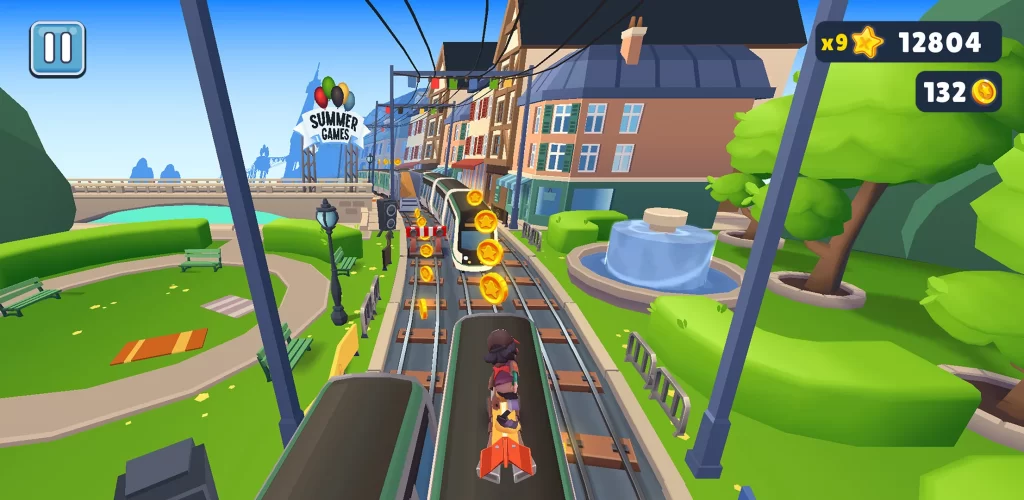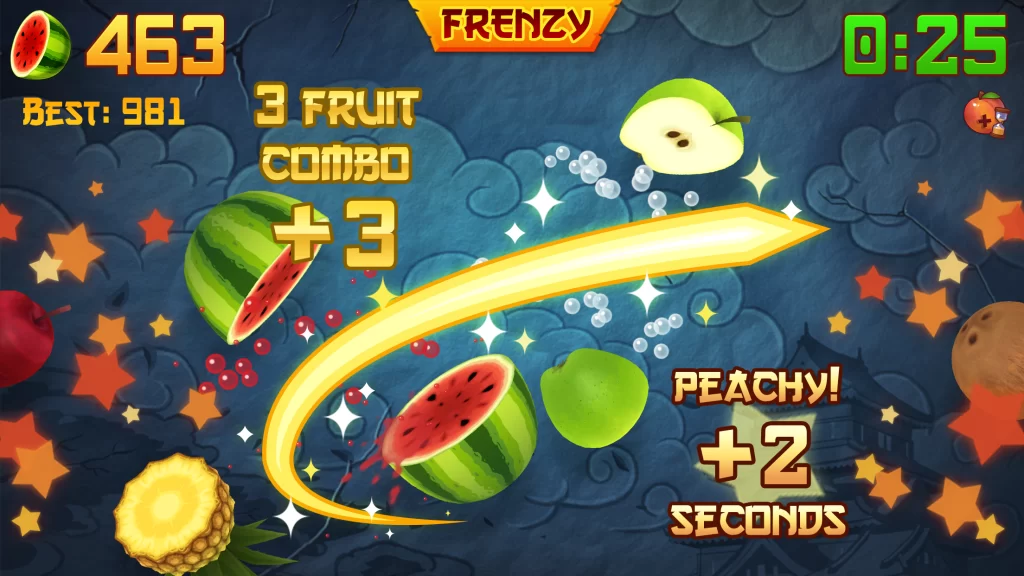Smartphones are everywhere these days, and most people have a go-to time killer app installed – often a hyper-casual game. These bite-sized digital experiences took the mobile world by storm with their simple mechanics and mass appeal.
Perfect for quick play sessions throughout the day, mobile titles like “Fruit Ninja,” “Hole.io,” “Temple Run 2,” or “Helix Jump” got the attention of millions of gamers, young and old alike.
You can read more about their definition, examples, and success cases in our other article.
If you’re considering dipping your toes into game development, hyper-casual games are an excellent starting point. Don’t worry if you’re not a coding wizard – these games are far simpler to create than your average mobile title.
In this article, you’ll understand how to make hyper-casual games, how to choose your development toolkit, and how to get some tips to keep players coming back for more.
How to make hyper-casual games: first steps

Before you start dreaming up elaborate storylines or character designs, there’s one golden rule in hyper-casual game development: mechanics come first, theme second.
This point cannot be stressed enough. The core gameplay loop is the beating heart of any successful hyper-casual game.
Start by focusing on a single, engaging mechanic. It should be easy to learn but challenging to master – this is the secret sauce that keeps players returning for “just one more try.” Think about games like “Crossy Road” or “Flappy Bird.” Their mechanics are incredibly simple, but the challenge ramps up quickly, giving them their addictive magic.
Another key strategy is to keep an eye on current trends. What are people playing, watching, or talking about right now? Trendjacking can give your game an immediate boost in relevance and appeal.
However, be careful not to simply clone existing games – put your own unique spin on popular concepts.
Lastly, don’t get too attached to your first idea. The hyper-casual market moves fast, and iteration is key. Prototype early and often. Create a bare-bones version of your game idea and test it out. Adding fancy graphics or power-ups will only save it if it’s fun in its simplest form. Be prepared to pivot or completely change direction based on feedback and testing results. Promise?
Choosing your hyper casual game development tools

Once you have a solid concept, it’s time to choose your development tools. Fortunately, there are plenty of beginner-friendly options available:
- Unity: a popular choice for both beginners and pros. It’s free until you start making serious money, and there’s a wealth of tutorials and resources available online partly thanks to its huge market representation (almost 40% of all developers use Unity as their main game engine);
- Godot: an entirely free and open-source engine that’s gaining popularity. It’s great for 2D games and has a gentler learning curve than some alternatives. It accepts the most popular game development languages and includes its own scripting language, GDScript, which feels close to Python;
- Buildbox: specifically designed for creating hyper-casual games with no coding required. It’s a paid tool, but it can be a good option if you’re intimidated by programming;
- GDevelop: another no-code option that’s free and open-source. It’s great for quickly prototyping ideas before moving to other game engines, but you can create really good games with it, too.
Consider your budget and long-term goals when choosing between free and paid tools. Free engines like Godot and the free tier of Unity are usually sufficient for starting developers – the latter won’t charge you anything until you start raking in over $100,000 a year with your game.
Now, unless you’re going old-school and developing a simple text-based game, you’ll also want some graphics and possibly sounds to go with it. Anything that is not part of the code, but is used within the game is called a game asset, and you’ll want them even if you’re only prototyping ideas.
In this case, remember asset stores exist! These are treasure troves of pre-made art, sound effects, and music that can save you time and effort. You’ll find many things in Unity’s Asset Store, but you can also get free resources on sites like OpenGameArt.org or Freesound.org.
Remember, in these games, simple, clean, and minimalistic visuals often work best (think of Helix Jump’s graphics for example).
You don’t need AAA-level graphics to create a hit game. Instead, focus on making your core gameplay fun and engaging, and the rest will follow.
Hooking players with your hyper-casual game

Speaking of “fun and engaging” mechanics, your game’s main loop must be instantly understandable and immediately fun. Players should grasp the basic concept within seconds of starting the game.
In “Flappy Bird,” all the player had to do was tap the screen to fly higher and avoid obstacles; in “Fruit Ninja,” the player slices fruits while avoiding bombs and other hazards. Simple, right? Yet punishingly difficult to master.
Progression is also key to keeping players engaged. That “just one more try” feeling is everything in hyper-casual games. You can achieve this through increasing difficulty, unlockable content, or beating high scores.
Some games even incorporate “meta progression” systems, where players spend materials obtained in previous runs for small but impactful upgrades. This gives a sense of advancement even when players fail, encouraging them to keep coming back.
Great, but how do I monetize hyper-casual games?
We hear you. In this category, ads are the primary revenue source, generating around 90% of the total income. However, in-app purchases (permanent upgrades, a one-time fee to permanently disable ads or cosmetics like “Crossy Road” does masterfully) can also play a role, so the balance can fluctuate depending on the game.
Be careful with ads, though. It’s tough to find the right balance, but the goal here is to monetize your game without frustrating players or interrupting the gameplay flow too much.
Test and polish your game!

Playtesting is crucial in hyper-casual game development. Start with friends and family, but don’t stop there. Seek feedback from strangers who have no emotional investment in your success. Their honest opinions can be invaluable in refining your game.
Consider a beta testing phase. This can help you identify and squash bugs before your official launch. A smooth, bug-free experience can be the difference between the success and failure of an otherwise popular hyper-casual game.
Don’t underestimate data-driven design either. Use analytics gathered from previous tests to refine gameplay and balance your title. Metrics like session length, retention rate, and ad engagement can guide your decisions on everything from difficulty curves to monetization strategies.
Finally, while visuals and sound shouldn’t be your primary focus, they still play a crucial role. Aim for bright, appealing graphics and satisfying sound effects. Don’t overthink it – these games are supposed to be casual time killers, not deep, award-winning AAA experiences.
Conclusion: your game development journey starts now
Creating a successful game is all about iteration, testing, and player feedback. Start with a simple, engaging mechanic, prototype quickly, and be prepared to pivot based on what you learn.
Once everything is ready, don’t forget to do some App Store Optimization (ASO). Choose a catchy title, create an interesting icon, and write a succinct description to go with it. These elements can significantly impact your game’s discoverability.
Don’t underestimate the power of social media marketing and community building in spreading the word about your game, too!
With all this information, it’s time to take action! Start brainstorming ideas, experimenting with development tools, and creating your prototypes. And remember: if you need support along your game development journey, Main Leaf Games is here to help.
As a trusted game development outsourcing company, we have the expertise to help you through every step, from concept and asset creation to programming and post-launch support. Don’t hesitate to reach out and let us help bring your hyper-casual game idea to life!

